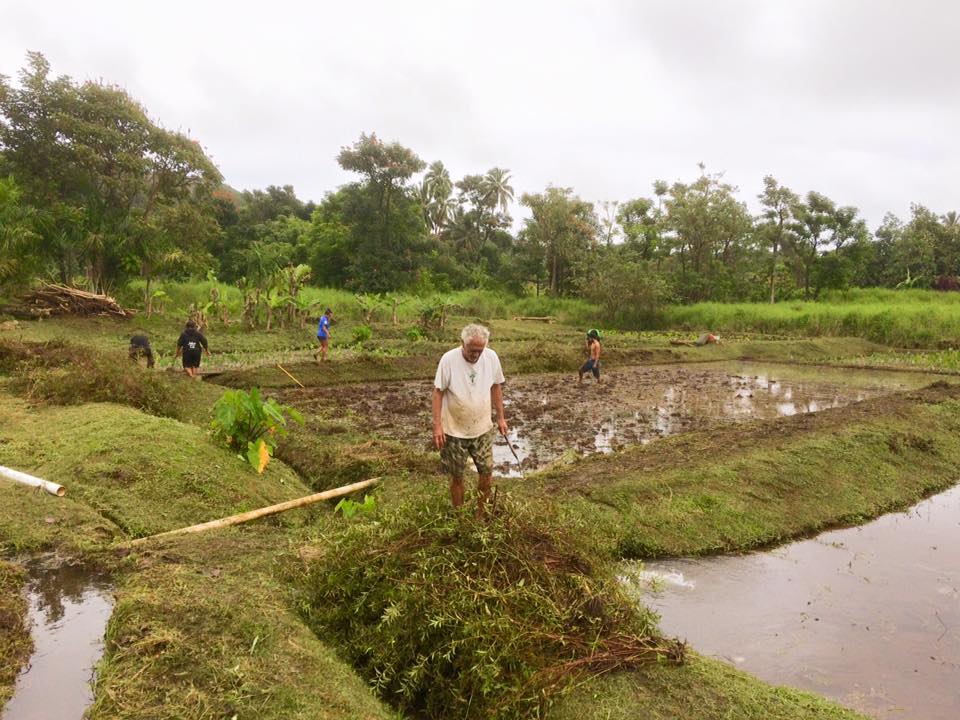By Brian Perry
December 16, 2024

The Board of Land and Natural Resources voted 5-0 Friday evening to issue a revocable permit to Alexander & Baldwin and subsidiary East Maui Irrigation Co. for the use of East Maui stream water, much of it for Upcountry drinking water and for nearly 10,600 acres of Mahi Pono farm lands.
The board action closed its last meeting of the year. The seven-member board chipped away at a busy agenda and had a “hard stop” deadline of 5:30 p.m. Friday. That was because of travel schedules of some board members, said board Chair Dawn Chang, who kept trying to move things along, repeatedly asking public testifiers to summarize their comments, especially if they already submitted written testimony.
Chang noted that a current permit for A&B to continue water diversions was set to expire at the end of this year.
Department of Land and Natural Resources’ Land Division staff recommended passage of a proposed revocable water permit that would amend and take the place of an earlier permit approved by the board on Dec. 8, 2023.
The Sierra Club of Hawaiʻi opposed the permit, saying that, while it had made “improvements” over the earlier permit, it still allocated too much water to A&B/EMI and did not adequately reduce the waste of millions of gallons of water — particularly water that flows down and out unlined water reservoirs that are more than 100 years old.
During public testimony, Sierra Club attorney David Kimo Frankel showed board members a photo of an unrepaired stream diversion that he said was continuing to deprive stream water to downstream farmers, who are continuing to suffer from the lack of water.
“The stream below here is dry,” he said. “There are people on these streams who live and depend on the streams. They can’t take any water from the streams most of the time. There are kalo farmers or people who would like to be growing kalo who have no water. These folks are farmers. (A&B/EMI) want to expand their operation while people are suffering. That is wrong.
“And, not only are people deprived of water, not only are native rivers deprived of water, but these guys are wasting water, millions of gallons of water a day, and we can prove it,” Frankel said.
A&B maintained that the water allocations should be based on an annual average, not monthly, as recommended by staff. It contended that A&B’s water allocation is too low, even if an annual average is used.
Mahi Pono had a planted acreage of 10,587 acres as of Sept. 30, according to EMI. And, during the third quarter of 2024, EMI diverted an average of 32.31 million gallons per day.
Also, in the third quarter, “Mahi Pono continued focusing on the maintenance and growth of its existing crops and preparing new fields for scheduled plantings,” EMI said. “The majority of the more than 250,000 trees ordered for planting this year arrived during the third quarter, and a supplemental final shipment arrived mid-October. As a result, plantings began at the end of the third quarter and will continue through the end of the year as the young trees become field ready. The permittees and, by extension, Mahi Pono, remain committed the efficient use of East Maui stream water. Mahi Pono’s total amount of water usage, together with that of the County of Maui, will not exceed the limits of the interim in-stream flow standard decisions at any point during its expansion.”
The Sierra Club said the staff recommendation overlooked the availability of unused water that is allocated to Maui County.
And, so the ongoing disputes continued. There were opportunities for Mahi Pono and the Sierra Club to “go out into the hall for five minutes” and attempt to reach a resolution. But the final result fell short of what Chang said she hoped would be a “mutually” agreeable resolution.
Instead, well after 5:30 p.m., the Sierra Club officially asked for a contested case proceeding, which the board — with five members remaining in its late hours — quickly denied. It remains to be seen if the Sierra Club will mount another legal challenge.
The eventual passed board motion included 3,263 gallons per day per acre, averaged annually, less 1 million gallons per day. Mahi Pono had sought an annual, rather than a monthly average, which had been recommended by staff.
The board also required Maui County to coordinate an interim committee to discuss water usage in diverted streams areas under the revocable permit. The committee includes EMI/Mahi Pono, the Maui Farm Bureau, the Office of Hawaiian Affairs, the Native Hawaiian Legal Corp., the Haʻikū Community Association, the Sierra Club, Nā Moku Aupuni O Ko`olau Hui, Maui County, the Department of Hawaiian Home Lands and the Aha Moku Advisory Committee, as well as interested members of the Huelo community.
Maui County will get 5.25 millon gallons per day, averaged monthly, “which is the amount the board finds to be reasonable and beneficial.” There was no daily water allocation specifically for the Kula Agricultural Park.
Monthly rent for water use is $23,598, or $283,176 annually. A collateral deposit equal to twice the monthly rent is required. The permit begins Jan. 1, 2025. The applicant also pays $139,463 annually to contribute, either in funds or in-kind services, for watershed management activities.
The revocable permit is temporary, but allows for the continuation of existing water uses until a long-term water license can be issued via public auction. Staff said it believes a single permit (instead of four separate ones) that consolidates all revocable permit requirements into a single permit “would result in greater clarity and transparency and allow for the use of the most recent revocable permit standard form.”
Among permit conditions is the requirement that “there shall be no waste of water.”
The use of East Maui water has been hotly disputed for years between A&B and environmentalists/East Maui taro farmers.